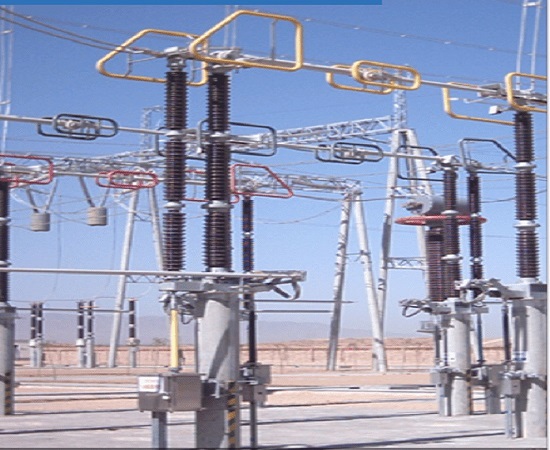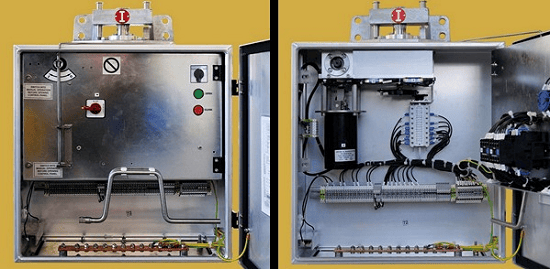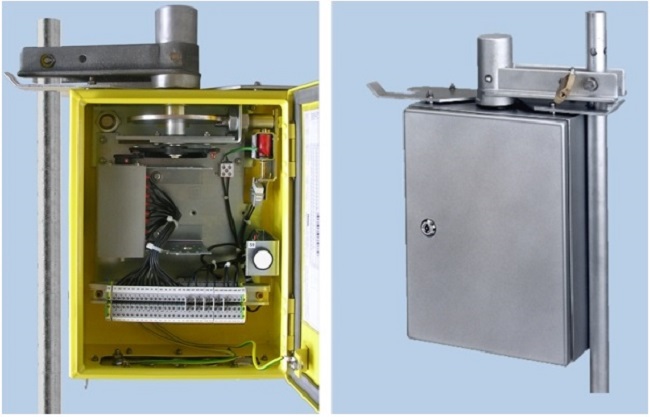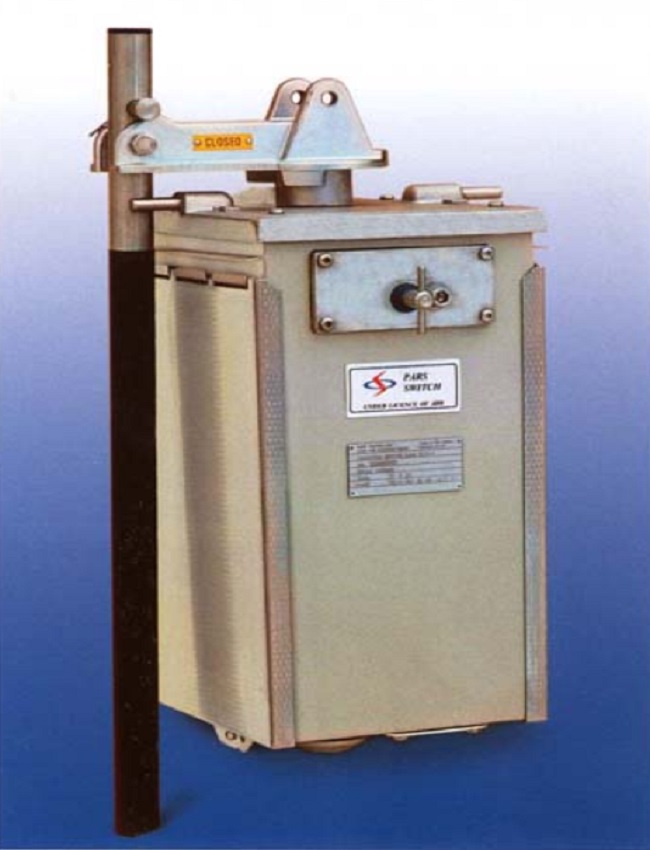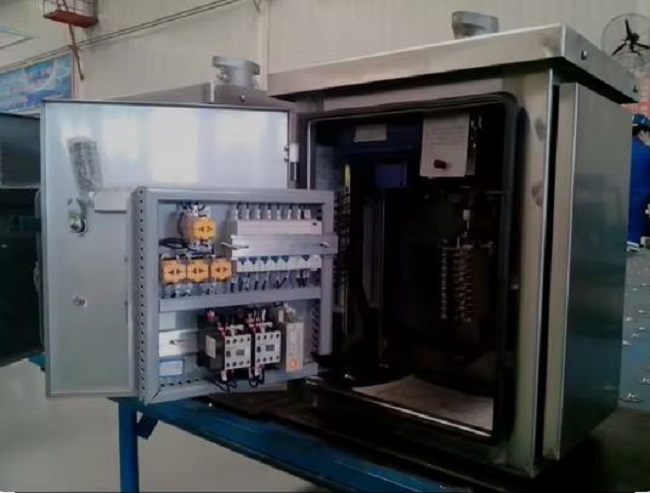
Motor-driven operating mechanisms almost entirely actuate high voltage disconnector switches, but manual mechanisms are also used for earthing switches. The operating mechanism is either mounted directly on the base frame of the disconnector or earthing switch.
Motor-operated mechanisms may also have an emergency manual actuator in case of failure of auxiliary power or for adjustments.
The operating mechanism housing has position indicator switches to show the switching position, and the motor-operated mechanisms also have contractors, etc., to control the actuators.
The mechanical actuation energy is transmitted from the motor to the actuation shaft by a spindle gear, which has an increased torque on closing and opening the main contact point to break ice loads.
The operating mechanism shuts down automatically when the end position is reached. The mechanisms of the disconnectors and earthing switches can be interlocked relative to each other and to the associated circuit breakers to prevent maloperation.
GW11-363kV Disconnect Switch GE Vernova disconnector switch with the operating mechanism in the substation
What is an air break high voltage disconnector?
An air break high-voltage disconnector is a crucial component in high-voltage power systems, designed to isolate sections of a circuit under load. This type of disconnector is named for its design, which breaks the circuit in the open air, leveraging the natural insulating properties of the air to stop the flow of current.
1. Air break high voltage disconnectors are designed to isolate sections of a circuit.
2. The “air break” refers to the process of breaking the circuit in the open air.
3. The air’s natural insulating properties are used to halt the current flow.
How does the air break high voltage disconnector switch operating mechanism function?
The air break high voltage disconnector switch operating mechanism is a complex system involving both mechanical and electrical components. When the switch is activated, the mechanism initiates a sequence of actions, causing the disconnector to move into the open or closed position. This movement breaks or completes the electrical circuit, respectively.
1. The mechanism comprises both mechanical and electrical components.
2. When activated, it initiates a sequence of actions moving the disconnector into the open or closed position.
3. The movement of the disconnector breaks or completes the electrical circuit.
What is the role of a motor-operated operating mechanism in an air break high voltage disconnector?
A motor-operated operating mechanism in an air break high voltage disconnector is an electromechanical system that uses a motor to drive the movement of the disconnector. In response to control signals, the motor engages, moving the disconnector to open or close the circuit. This type of operating mechanism is often employed in situations requiring remote operation or automation.
Motor-operated operating mechanism (HAPAM company)
1. It’s an electromechanical system that uses a motor to drive the disconnector’s movement.
2. The motor operates in response to control signals, enabling the opening or closing of the circuit.
3. This mechanism is typically used in situations that need remote operation or automation.
How does a hand-operated operating mechanism for an air break high voltage disconnector work?
A hand-operated operating mechanism for an air break high voltage disconnector is a manual system that relies on an operator’s physical force to move the disconnector. The operator uses a handle or lever, applying force to open or close the circuit. This type of mechanism is often used in smaller substations or in situations where motorized systems are not practical.
1. This manual system relies on an operator’s physical force to move the disconnector.
2. The operator uses a handle or lever to open or close the circuit.
3. Hand-operated mechanisms are often used in smaller substations or where motorized systems are impractical.
Hand-operated operating mechanism for disconnector switch(HAPAM company
What are the benefits of using a motor-operated operating mechanism for an air break high voltage disconnector?
A motor-operated operating mechanism offers numerous advantages. It allows for remote operation, reducing the need for personnel to be physically present at the high-voltage site, thus increasing safety. It also enables automation, increasing reliability and efficiency. Additionally, it can handle larger disconnectors that would be difficult to operate manually.
1. It allows for remote operation, improving safety by reducing the need for onsite personnel.
2. The motor-operated mechanism enables automation, enhancing reliability and efficiency.
3. It’s capable of handling larger disconnectors that are challenging to operate manually.
What are the advantages of a hand-operated operating mechanism for an air break high voltage disconnector?
Although more labor-intensive, a hand-operated mechanism offers its own set of benefits. It’s typically simpler and more cost-effective to install and maintain than motor-operated mechanisms. It also doesn’t rely on electrical power, making it a reliable choice in emergencies or areas with unreliable power supplies.
1. The hand-operated mechanism is typically simpler and more cost-effective to install and maintain.
2. It doesn’t rely on electrical power, making it reliable in emergencies or areas with an unreliable power supply.
3. Despite being labor-intensive, it provides a robust and dependable solution.
Hand-operated operating mechanism for disconnector and earthing switch (Pars Switch company)


